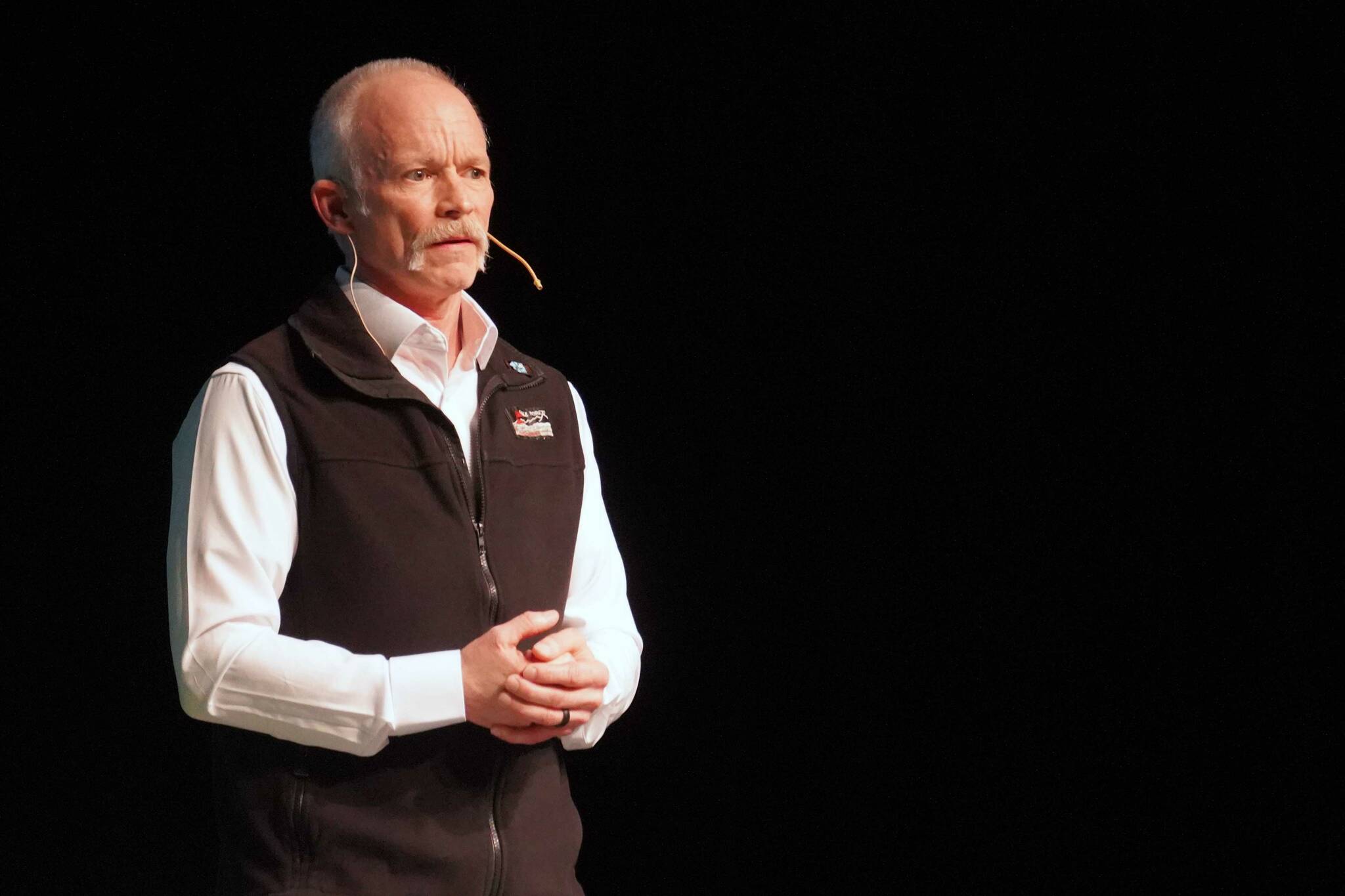During Homer Electric Association’s 2025 annual meeting at Kenai Central High School earlier this month, General Manager Brad Janorschke gave an address touching on the utility’s outlook for energy production, its work to combat outages caused by falling trees and a discussion of its rates.
Natural gas, Janorschke said, is and remains the “backbone” of the utility’s energy production. While in recent years uncertainty has swirled around how Alaska’s utilities can provide amid a projected shortfall of Cook Inlet natural gas, Janorschke said there are multiple solutions on the horizon that each could meet HEA’s need.
Where projections described the supply of local gas falling below demand as soon as 2028, Janorschke said there are now four projects all looking to bring gas availability to the Kenai Peninsula and Alaska’s Railbelt in the coming years. He pointed to new exploration near Nikiski’s forelands area, the long gestating Alaska LNG Project recently transferred to New York-based Glenfarne Group, an LNG import facility proposed by Enstar with Glenfarne, and a redevelopment of Nikiski’s LNG export terminal into an import terminal by Hilcorp-related Harvest Alaska.
“Options are good,” he said.
Also, Janorschke said, HEA has newly secured a six-year contract with ENSTAR to purchase gas through 2031 and set a five-year mutual aid agreement to share power or gas during times of low supply with Chugach Electric Association.
HEA is also repurposing around $100 million in property assessed clean energy financing from the federal government toward development of new renewable energy projects.
During his presentation, Janorschke also spotlighted HEA’s efforts to combat hazard trees, which, due to size, condition and location, threaten utility infrastructure like power lines. Those trees, specifically those falling from private property outside of the utility’s right of way, are responsible for a massive increase in the number of power outages in recent years.
“It’s had a huge impact in certain areas of our system, particularly those areas that have the greatest number of infestations of spruce bark beetle,” he said.
HEA can and does respond to trees fallen on power lines, to restore service to its members, Janorschke said. What “keeps me up at night” is the risk of wildfire. HEA is committed to combating the risk from trees, he said, but needs permission from property owners to clear trees that have grown tall enough, just outside of the HEA right of way, to fall onto a power line.
Janorschke also touched on HEA’s rates, which he said have faced significant inflationary pressure as materials the utility needs to do business and keep the power on have increased in price. He said HEA has worked hard to find ways to reduce the cost of energy, like a planned installation of new turbines that expend less fuel at HEA’s Nikiski plant. Those efforts have kept HEA’s rates “relatively flat” when adjusted for inflation.
“I still wish it was cheaper,” he said. “I’m sure you do too.”
A full recording of Janorschke’s address can be found at “Homer Electric, Inc.” on YouTube, beginning at 1:04:25 in “Homer Electric Association 2025 Meeting of the Members.”
Reach reporter Jake Dye at jacob.dye@peninsulaclarion.com.

